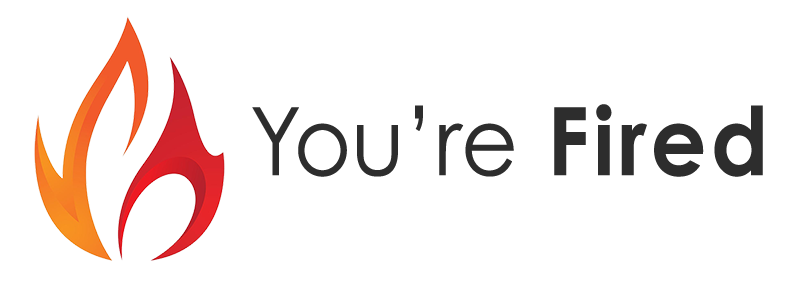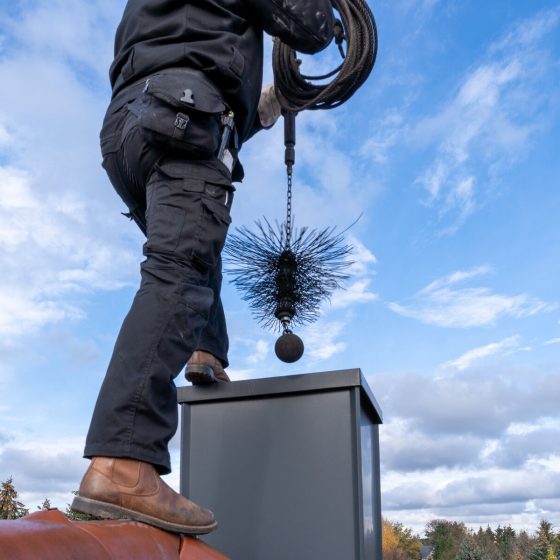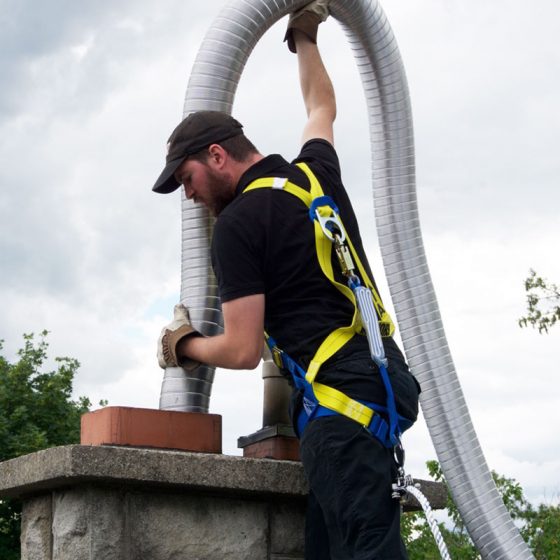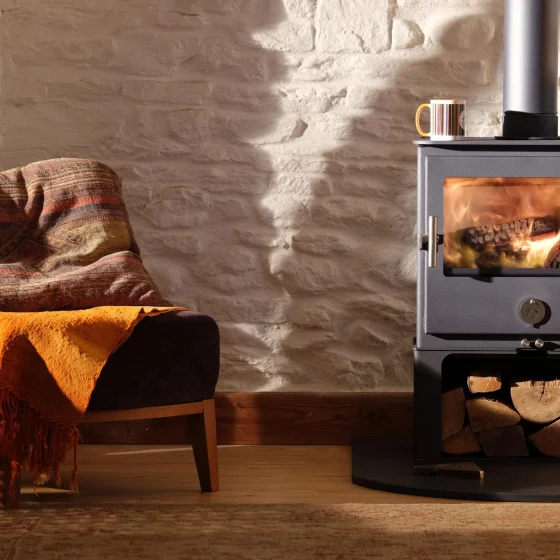Frequently Asked Questions
Yes you should always fit a carbon monoxide alarm where a solid fuel appliance has been installed. This should be at height and within 3 metres of the appliance. Carbon monoxide is a toxic gas and can be lethal.
If you use your appliance everyday then it should be swept at least twice a year. Ask your sweep for their opinion and keep a note of when they visit so that you can get an idea of the frequency required. If you use the stove or fire place only occasionally once a year is enough but make sure you have this carried out just before the heating season as it is not just soot that can block the chimney.
For steel lined flues a good cowl is essential as any water entering the flue will quickly arrive in the stove or fire place. We generally opt for the mini Eurocowl which is made of stainless steel and can be painted to suit the colour of the chimney pot. It will also keep out nesting birds and has some anti-down draught qualities. With thatched properties we do not recommend using a cowl.
Well there are a few options. We can sometimes use an adjacent flue and install a pair of liners. On occasions we have rebuilt a chimney stack to larger dimensions to accommodate larger liners. Or if all else fails you could consider fitting a chimney fan.
Many of our clients would like an open fire but chose a stove for its far greater efficiency. The accepted efficiencies are significantly better with a stove. An open fire offers approximately 20% of the heat it generates to the room, with a stove that figure can be 70 or 80%. The stove can also be shut down at the end of the day and stop any warm air being drawn up into the flue – particularly important if you have underfloor heating.
Your flue will only need lining if it leaks or if it is not of a suitable size for the appliance connected to it. With older flues the chances are that it has deteriorated and has the potential to leak. Should you be considering a wood burning stove or similar then these are designed to work best on a particular size of flue. The standard size of flue for a stove is 150mm internal diameter and with a flue of this size the draught entering the stove is more controllable.
Where the flue is too large the internal flue temperature can be too cool and so any moisture in the smoke and fumes are more likely to condense. With gas fired appliances this is more noticeable but it is true for all fuels that there is a certain amount of moisture in them and if the flue temperature is too low these will condense potentially causing damp problems or encourage the build up of tar and soot.
Your fireplace is spilling smoke because there is not enough updraught in the flue to draw the smoke out into the atmosphere. So, if this is a recent occurrence, get the chimney swept. There may be a blockage of some sort, in older flues bricks may become displaced and birdnesting material can cause a restriction. Other causes are an opening that is too big for the flue size. A cold uninsulated flue not warming up enough to displace the fumes. Best advice is to get the flue swept and if the problem persists to call in an expert.
This varies with amount of use, the way the appliance is operated and the type and quality of fuel used. With flexible steel liners in general the 316 quality liner comes with a 10 year guarantee, 904 quality usually carries a 25 year guarantee. We suggest that where the fuel burnt is largely or exclusively fossil fuels then the higher quality 904 steel is used. This has better resistance to the acids associated with burning coal. For most appliances a Class 1 316 stainless steel liner is entirely acceptable.
Preferable to both these is the pumice system which has excellent longevity and durability together with the insulation value that exceeds that of the flexible liners. These carry only a 10 year guarantee but in our experience are very long lasting.
A flexible liner can generally be fitted within one day, a twin wall system can take one or two days and a pumice lining system can take 4 or 5 days. To build a new chimney on an existing building will take two or three weeks depending on size.
All stoves and open fires must have the right sized flue. With a flue that is too small the fire is likely to spill smoke and fumes into the room. With open fires, when they are lined, the flue is inevitably reduced in size and this can make an open fire unfeasible. With a tall, well configured, well insulated flue the flue area requirement can be as little as 10% of the fire opening. Otherwise, we suggest ensuring that the flue area is 15% of the size of the fire opening.
Generally, yes it is, however draughty your house is already! However, with a wood burning stove with an output of 5kw or less this requirement is not enforced in older properties where the air permeability is higher than in the modern home.
The permanent air vent, by the way, must be kept permanently open!
Naturally a chimney encourages air to travel up through it whether a fire has been lit or not; the taller and straighter the chimney the better the draught. In some areas because of the way that a house has been built or the natural surroundings the wind is forced down a chimney with greater force than the upward pressure in the flue. This can cause a fire to smoke on occasions. Fitting an anti down draught cowl or pot can help. The Marcone pot can be effective as well as the Eurocowl.
If you use wood then make sure it is well seasoned hard wood and that it is dry. Poor quality wood increases the build up of tar and can encourage chimney fires. Check that your appliance and flue are suitable before burning any other solid fuel such as coal. Some stoves are supplied as wood only and need an additional coal grate to be fitted before burning fossil fuels.
If your flue has been fitted in the last few years there should be a dataplate nearby or possibly in the electric meter cupboard and this will tell you what the fire and flue are suitable for.






